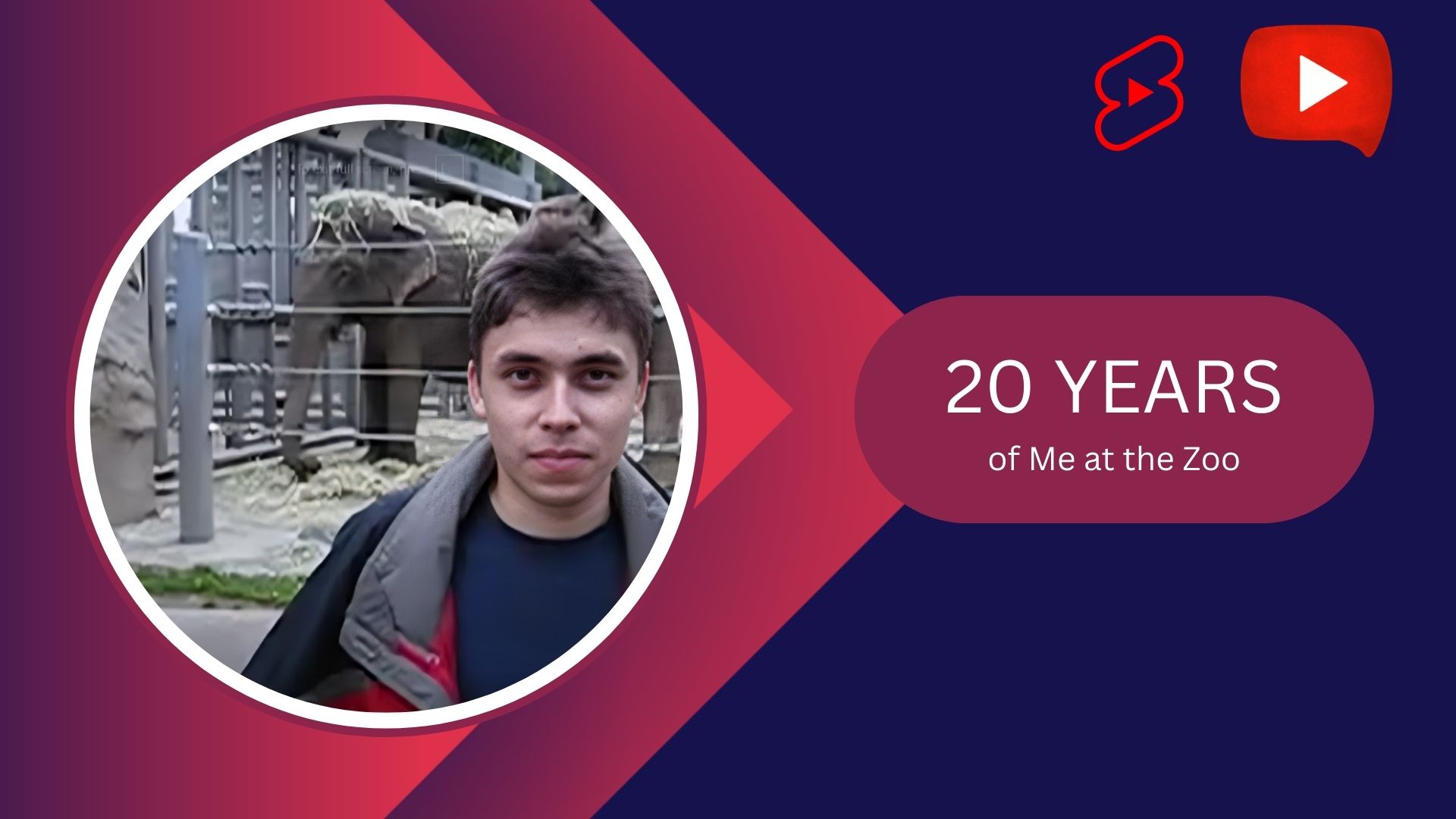One young man gave a now-iconic line while standing in front of three elephants at the San Diego Zoo on April 23, 2005.
"The cool thing about these guys is that they have really, really, really long trunks."
Originally published to YouTube, that 19-second film under "Me at the Zoo" was the first ever video. It was simple, unpolished, and seemingly ordinary — but it marked the beginning of something extraordinary.
Uploaded by Jawed Karim, one of YouTube's three co-founders (along with Steve Chen and Chad Hurley), this video wasn't just content — it was a proof of concept. It demonstrated a new way for people to share their lives, their stories, and their perspectives with the world.
Why Me at the Zoo Mattered
What made this short video groundbreaking wasn't what was in front of the camera — it was the fact that it was on camera at all, and online for anyone to see. Before YouTube, uploading videos to the internet was a technical challenge. YouTube made it effortless, giving rise to a platform where everyday people could share moments in real-time.
"Me at the Zoo" represented a radical shift. It showed that content didn't have to be polished or professional to have an impact. It could be casual, spontaneous, and relatable — and still spark global engagement.
The Turning Point: Google's Acquisition
In less than two years, YouTube's growth exploded. It became clear that this wasn't just another video-sharing site — it was a movement. Recognizing its potential, Google acquired YouTube in November 2006 for $1.65 billion in stock.
That deal not only validated YouTube's success but also fueled its future. With Google's infrastructure, YouTube grew from a viral platform to a video empire, attracting creators, advertisers, and billions of viewers.
YouTube: Then and Now
Looking back at that first video, it's hard not to notice how different YouTube was in its early days compared to today. In 2005, videos were short, often under a minute, shot on handheld cameras, and shared with no thought of monetization. There were no subscribers, no algorithms, and certainly no brand deals.
Fast forward to 2025, and YouTube has evolved into a multi-billion-dollar ecosystem. It supports high-budget productions, livestreams, animation, educational content, and long-form documentaries. Today's YouTubers are not just hobbyists — they're full-fledged entrepreneurs backed by sponsorships, merchandise lines, and entire production teams.
Yet despite this evolution, YouTube has recently returned to its roots in an interesting way. The launch of YouTube Shorts — quick, vertical videos meant to compete with TikTok — echoes the charm of those early, spontaneous uploads. It's a modern nod to the simplicity that once defined the platform.
The Legacy of "Me at the Zoo"
While it's tempting to view "Me at the Zoo" as a nostalgic footnote, it remains a powerful symbol. It reminds us that digital revolutions often start quietly. One guy. One camera. One zoo.
That single moment captured the heart of what YouTube would become: a space where anyone could press "record" and be seen, heard, and shared. It made video creation accessible to the world and gave rise to countless careers, communities, and creative expressions.
Twenty years later, "Me at the Zoo" stands as a digital monument — not because of its production value, but because of its message: you don't need perfection to make an impact. You just need authenticity, a moment worth sharing, and a platform to share it on.
And thanks to that one upload on April 23, 2005, the world found exactly that.

